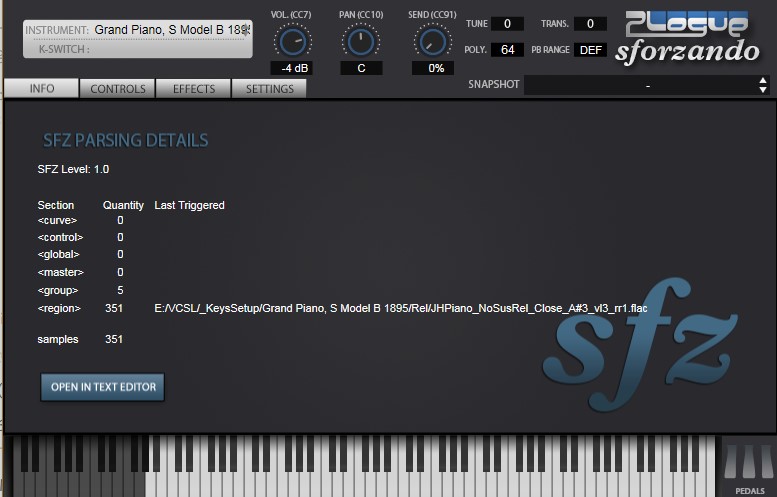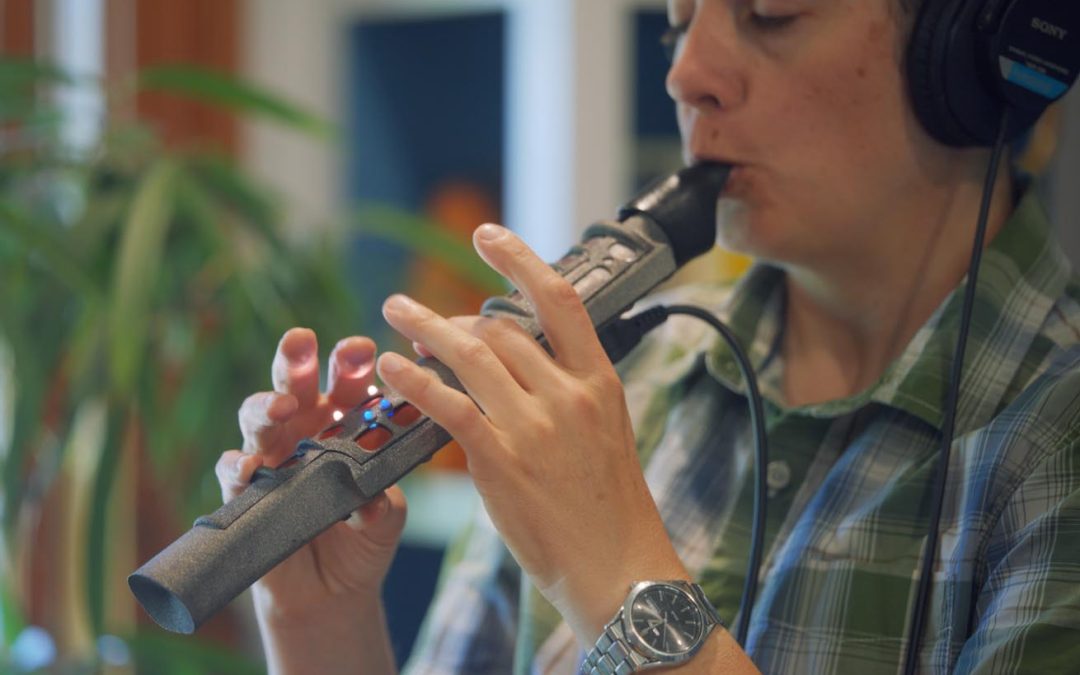When creating in our music software of choice, we often reach for additional software called Plugins to help extend the base functionality of that software. However, some confusion can arise when formats of plugins and sample libraries are confused. In this guide I will disambiguate the terms and show why using “VST” too loosely can have serious consequences.

What are Plugins?
A plugin is any sort of code which extends the functionality of a larger piece of software. For example, a plugin in a photo tool like Photoshop can provide additional processing not available in the “stock” form of Photoshop.
In music software, we use plugins for three purposes:
- Virtual Instrument, “VI”: Input is MIDI, output is Audio. This type of plugin transforms MIDI signals into audio waveforms through a variety of techniques including sampling (“sample libraries”), synthesis (additive, subtractive, granular, FM, etc.), wavetables, modelling synths, even AI.
- Virtual Instruments do NOT need to be plugins; they can be standalone software or even built into hardware, like a digital sax.
- Audio Effect, “FX”: Input is Audio, output is Audio. This type of plugin transforms an input Audio signal and outputs the result. These are things like equalizers, compressors, reverbs, distortion & tape emulators, guitar cab emulators, autotune, and more.
- MIDI Effect: Input is MIDI, output is MIDI. This type of plugin transforms MIDI signals into other MIDI signals. For example, moving breath (CC2) data to Mod (CC1) so it will work with another plugin that has no support for CC2, or reversing the input of an incorrectly wired sus pedal.
What Formats to Plugins come in?
On Windows, plugins usually come as a VST or a VST3. VST-based virtual instruments are called “VST Instruments”, abbreviated as VSTi. VST-based effects are called “VST Effects”, abbreviated officially to VSTe but everyone just calls them VST’s. A lot of confusion can occur from this.
VST and VST3 are a plugin format created by Steinberg, creators of Cubase. VST2 is the older standard, dating all the way back from 1999 and is effectively discontinued despite being widely used. VST3 was released in 2008 and continues development to this day.
On MacOS, VST is not commonly used. Instead, an Apple-developed standard called Audio Units (AU) is typical. Audio Units like VST can be both instruments and effects, but unlike VST, MacOS itself manages and validates AU plugins for safety before letting software access them.
Pro Tools uses its own proprietary formats, .AAX and previously .RTAS, so many plugins come in these formats too.
On Linux and in some DAWs like Reaper, other formats are used too: CLAP, LV2, DX, even direct Javascript!
What formats do Sample Libraries come in?
Some virtual instruments such as synthesizers are purely code, and in many cases, the entire instrument and all of its presets are held within the plugin file itself or a disk location holding presets in a proprietary format.
Here at Versilian Studios we develop Sample Libraries, a form of virtual instrument which involves sample files, individual recordings of real instruments played by real musicians.
Creating a sample library involves recording hundreds or thousands of individual notes on an instrument, splitting the all up into individual Samples, then creating a file which tells a Virtual Instrument plugin called a Sampler how and when to load and play those recordings back.
This file, known as an instrument definition file, often called a “patch”, “preset”, or “instrument”, lists all of the samples in the instrument and how they should be used. It also tells the sampler when and how to apply any FX, and even tells it where and how to arrange graphics on the user interface if there is one provided.

There are two formats of instrument definition files we work with, each with a corresponding sampler used for playback:
- .SFZ: an open format for instrument definition files, using the human readable SFZ Format. These files are loaded in a free sampler called Sforzando by Plogue. You can open this in any text editor (e.g. Notepad), read, and make changes to the instrument freely and the format is open-source to develop. For this reason, we use it in all of our freeware.
- .NKI: a closed-source format used by a commercial (paid) sampler called Kontakt by Native Instruments. Kontakt is arguably the industry standard for high-end sample-based virtual instruments, used by hundreds of companies and the vast majority of professional composers around the world.
There are dozens of other formats, as well as software like Trackers which can embed samples & sample instructions in their project files.
In all modern formats, including SFZ and NKI, the actual sample data is included separately as individual files, usually a format like WAV, FLAC, or NCW. This is known as a “non-monolithic” structure. Old formats like .sf2 and .gig use a “monolithic” structure where the samples are bundled in with the instrument definition file as one big payload, which gets messy when the size of the library gets larger and larger.

The Hi-Fi System Analogy
The easiest analogy to understand the relationship here is that of a Hi-Fi system and a CD.
A Hi-Fi system can have many different components from CD players to record players to EQ’s and preamplifiers. This is like a plugin, which is a component that slots together into a chain to transform sound or MIDI data. Not every hi-fi component has the same functionality or I/O!
A CD only contains fixed data: tracks of audio data and a table of contents pointing to those tracks. This is like a sample library: it contains audio files and an instrument instruction file telling the player where those audio files are and how to load them.
You can only listen to a CD when you load it into a CD player, just as you can only use a sample library when you load it into the correct sampler. You cannot load, for example, a CD into a record player, just as you can’t load a Kontakt patch into a Soundfont player.
Likewise you can’t directly load a sample library into your DAW without a sampler plugin to translate and control it, just as you can’t stick a CD directly into a speaker.
Why does this matter?
Many people go around the internet slinging terms like “Trumpet VST” or even “Soundfont VST”. This is akin to saying “The Beatles CD Player” or “Cassette CD Player” when trying to describe a Beatles album and a cassette tape.
This not only mistakenly implies all plugins are VST format (which they aren’t), it also implies that all sample libraries are standalone VSTi plugins, which has not been the case for decades. If you ask a group of professional composers for “Trumpet VST” they may think you are specifically looking for a standalone VSTi of a trumpet, and not recommend Kontakt, SFZ, or other instruments. “Trumpet VST” could even imply an effect plugin designed to make recordings of trumpets sound better!
You can easily miss out on finding your dream sample library this way, and end up with an outdated, ill-fitting, or low quality product at a bad price!
Recap
Plugin: Any sort of code which extends the functionality of a larger piece of software.
VST: A format of plugin used in digital audio, created by Steinberg.
Virtual Instrument: Any device which replicates or emulates the sound of physical instruments digitally/virtually.
Sampler: A type of plugin virtual instrument which uses libraries of samples.
Sample Library: A collection of samples and instrument definition file(s).
By using the correct terminology to describe different technologies, it will improve search results by providing you with the most applicable results, as well as ensuring your communication with other composers and producers will be clear and productive. Lastly, it helps new users learn to navigate the already quite complex world of audio production going forward.
For example, if you don’t care whether a virtual trumpet is sampled or synthesized, you could search for a “Trumpet virtual instrument”. If you do care, you should search for a “Trumpet sample library”. This can further be refined by adding a style, e.g. “Salsa Trumpet sample library” or “Orchestral Trumpet sample library”.
Similarly, if you own Kontakt and want to specifically find things for it, you could search “Trumpet Kontakt instrument” or “Trumpet Kontakt library”. Likewise, “Trumpet SFZ instrument” would get results for SFZ format, filtering out products you don’t want.

